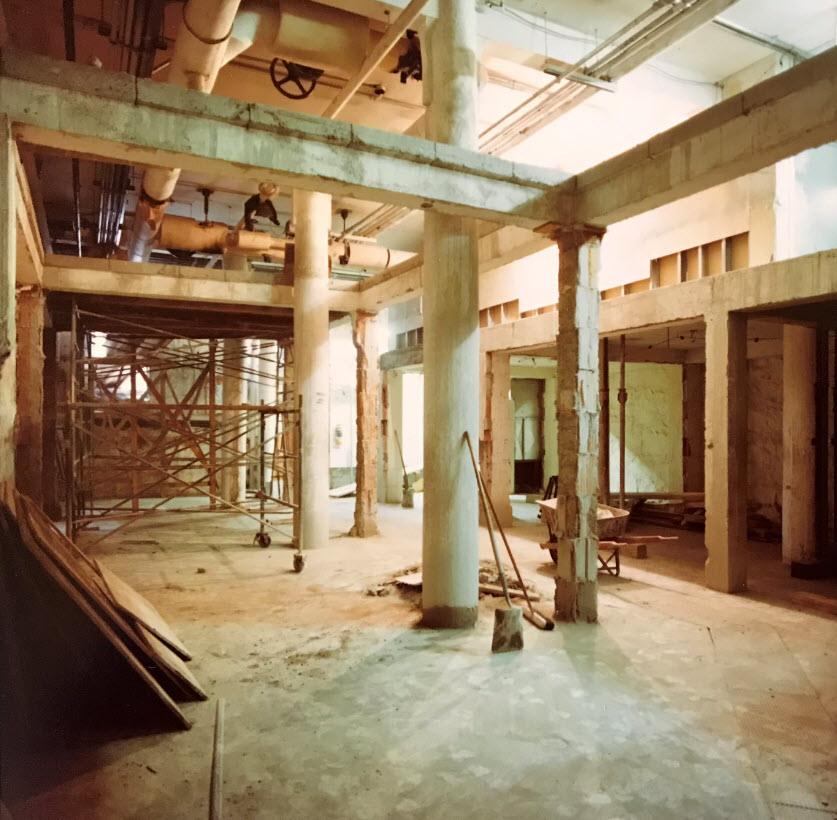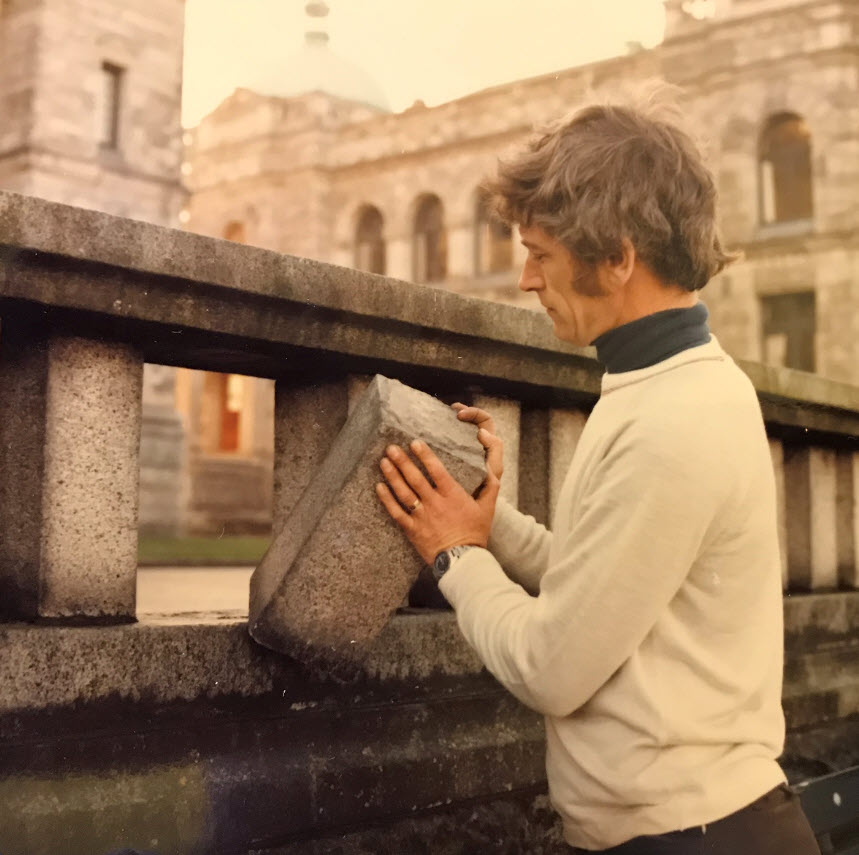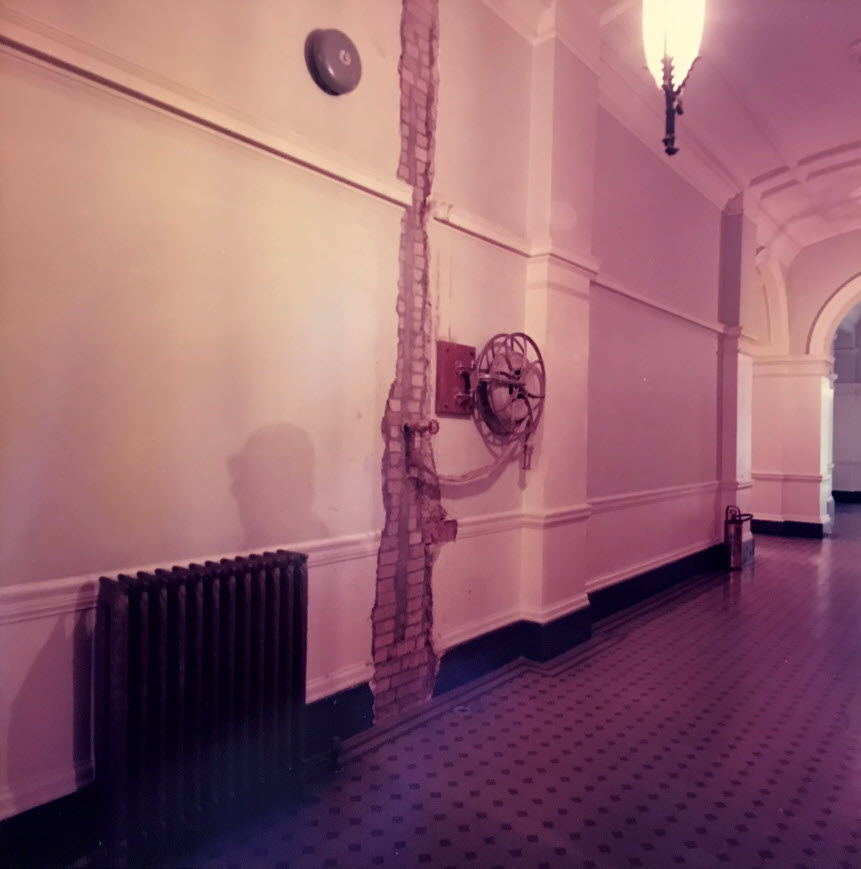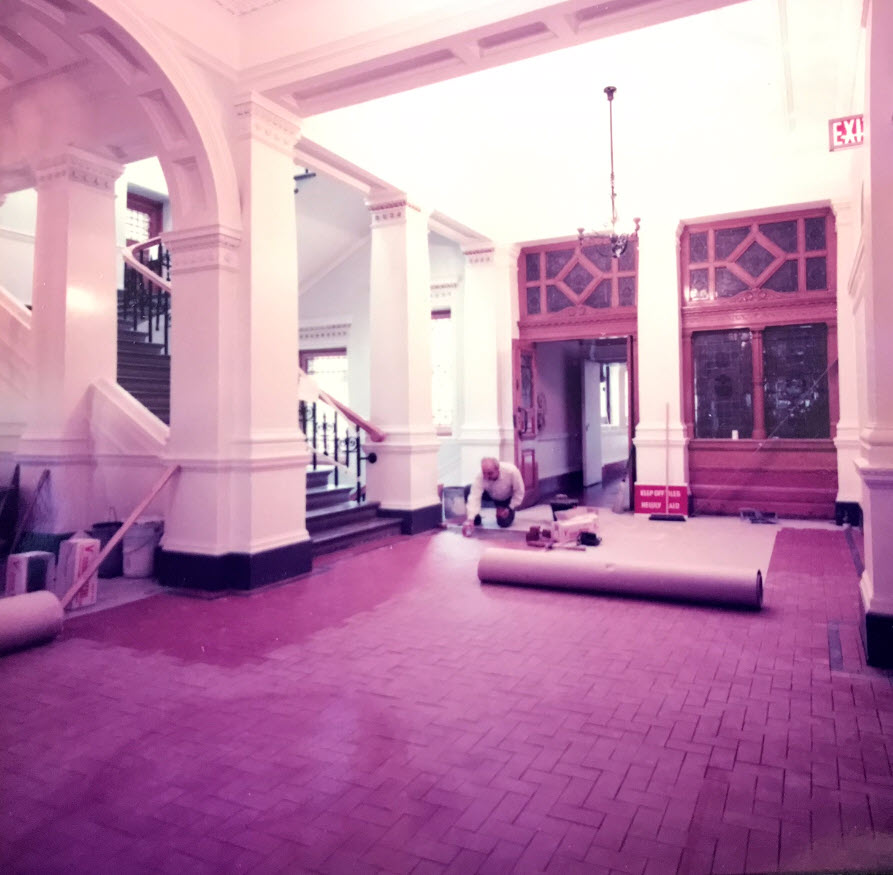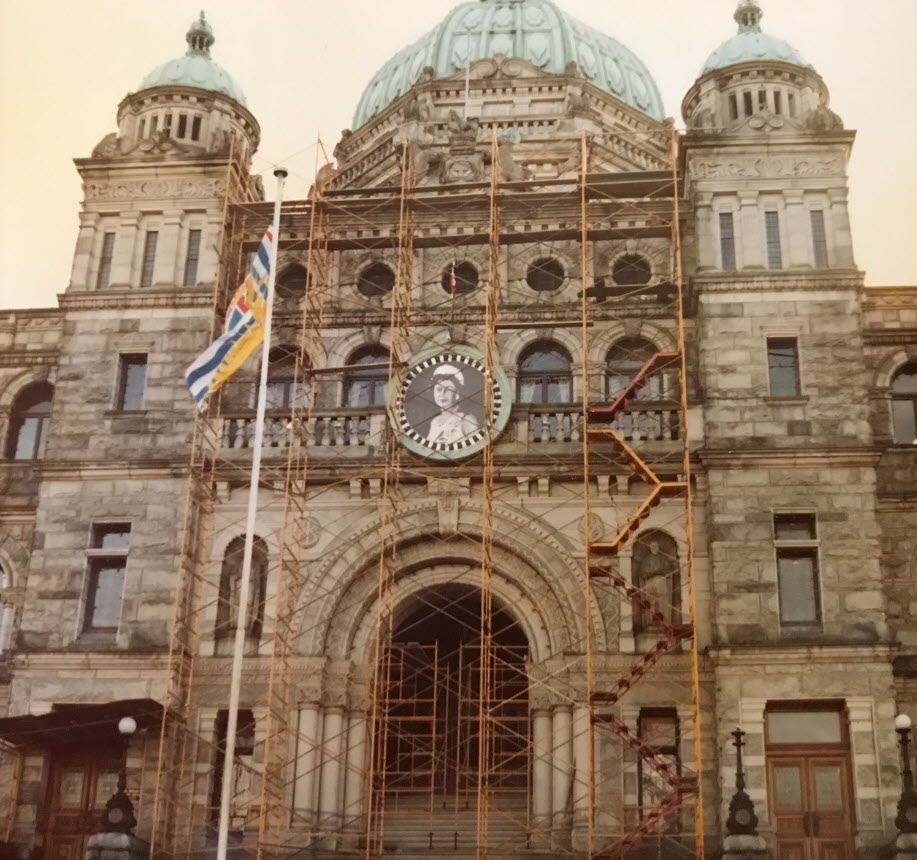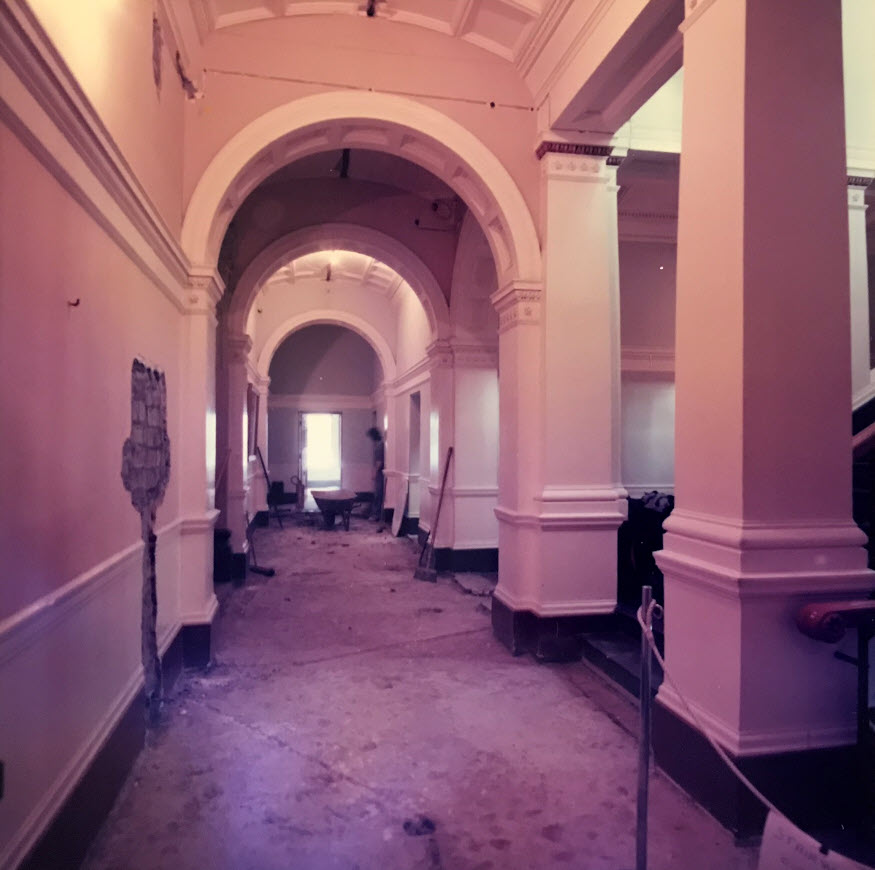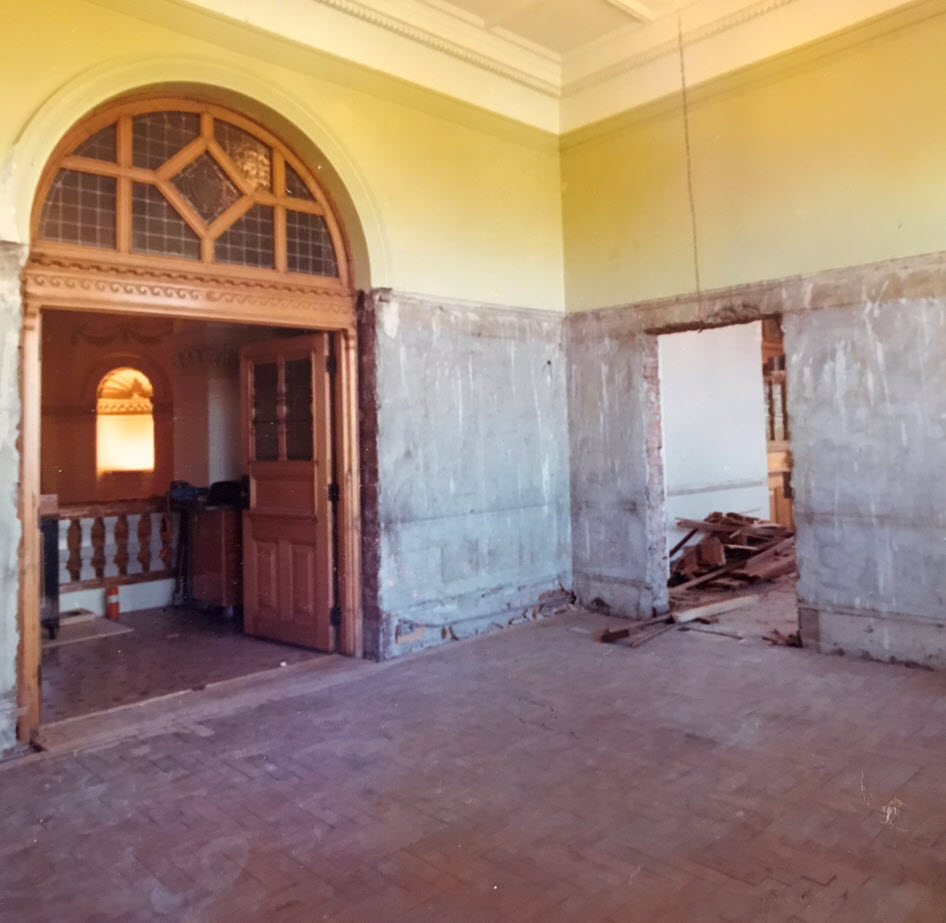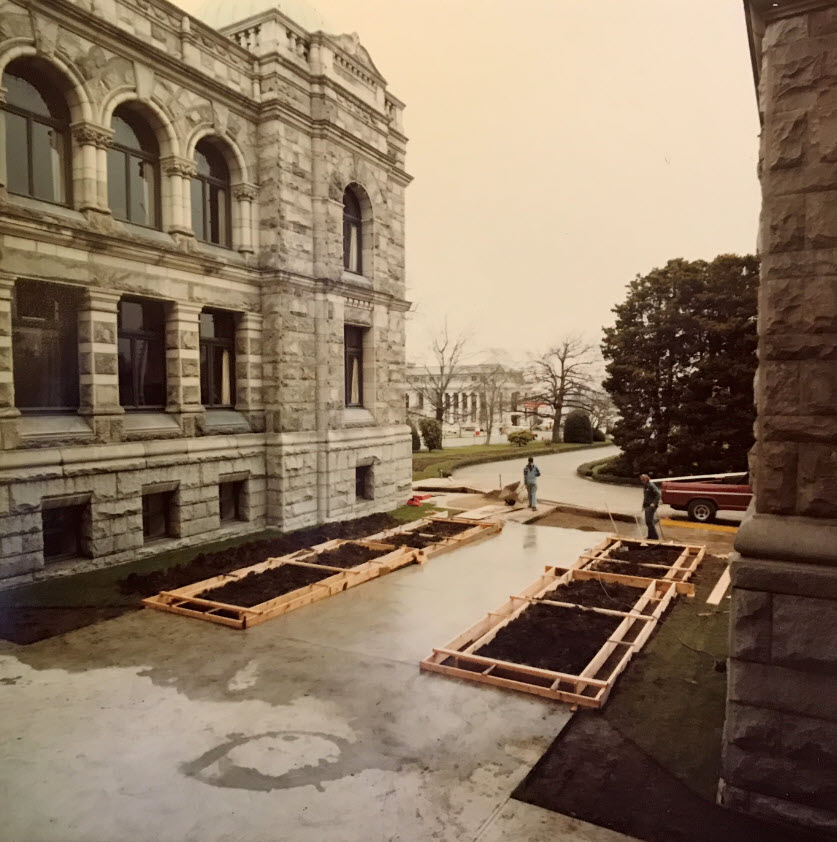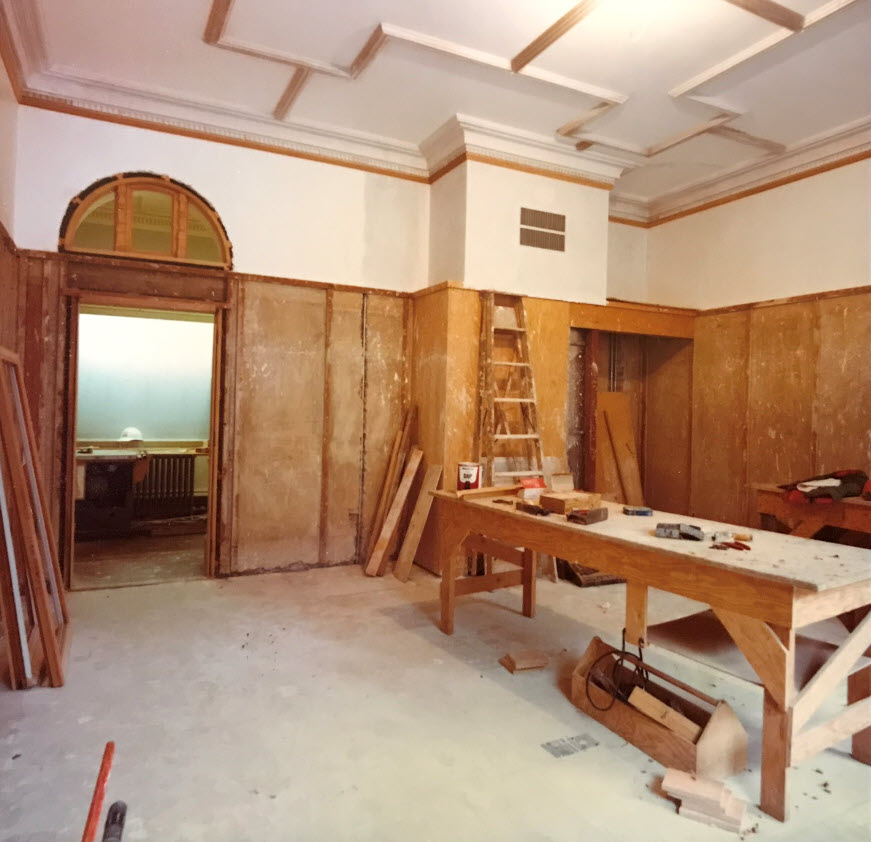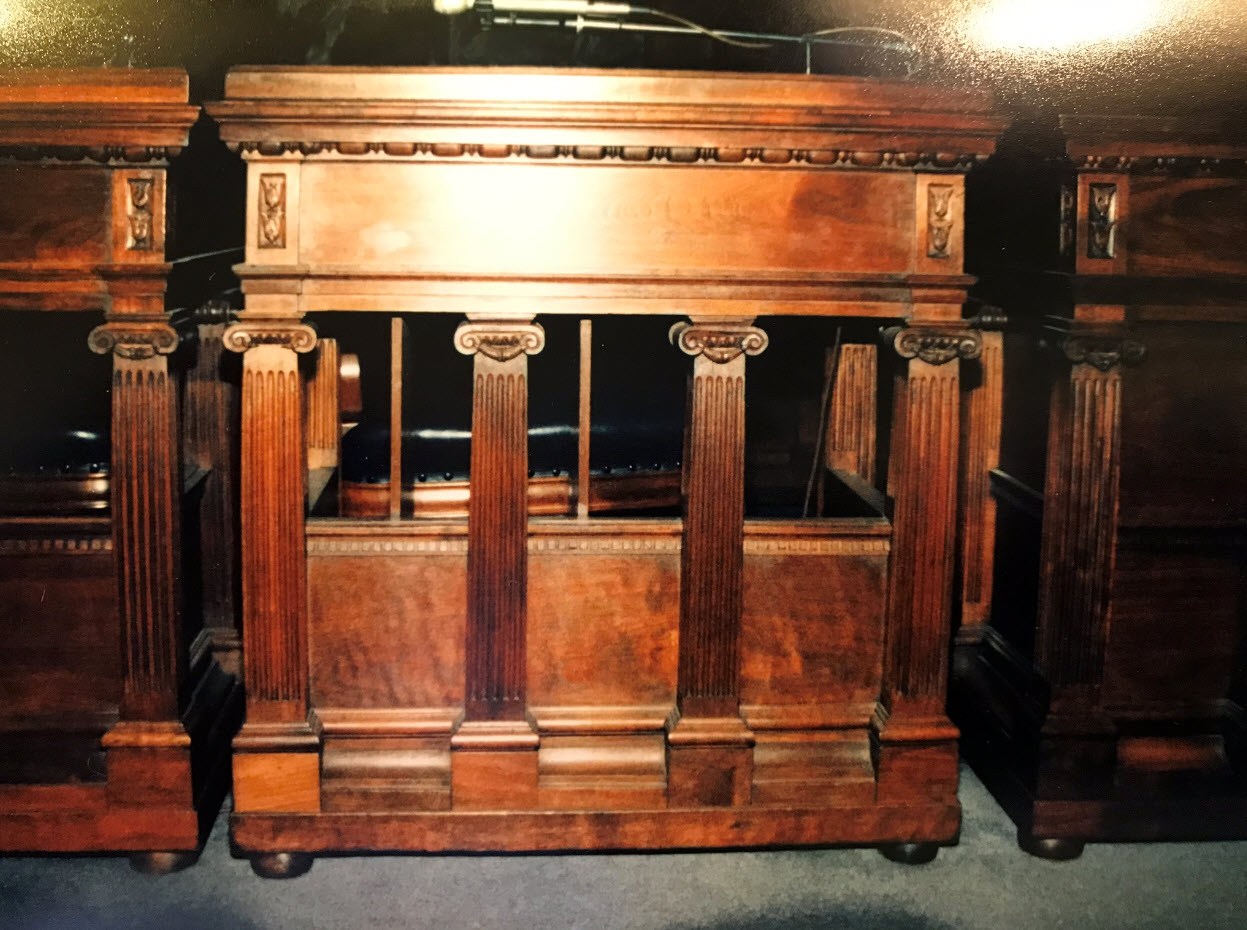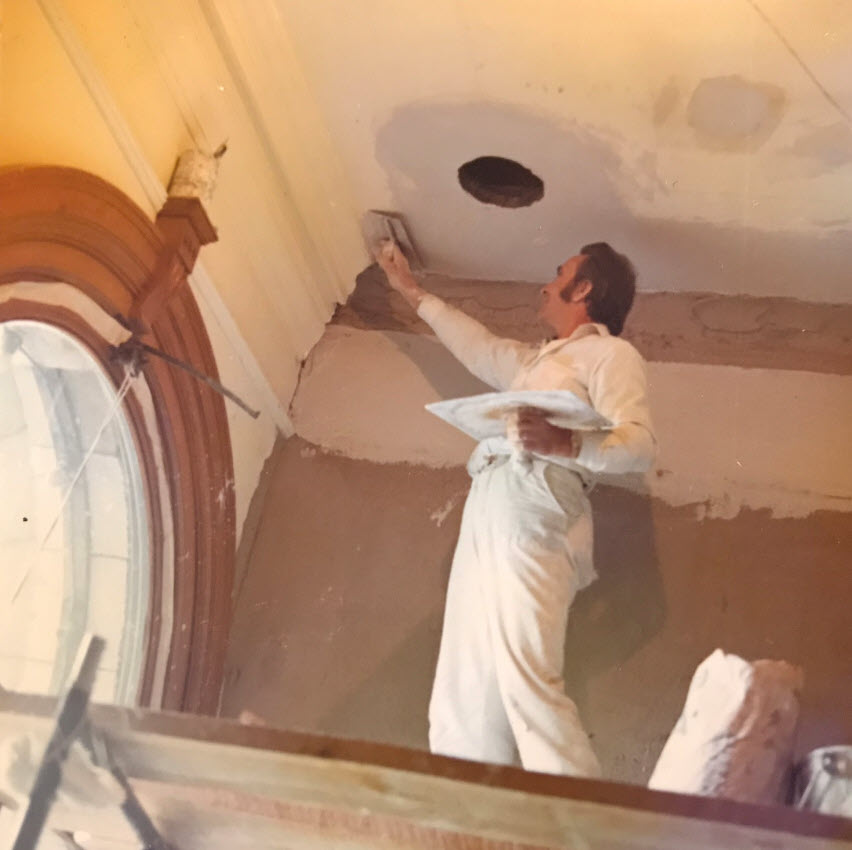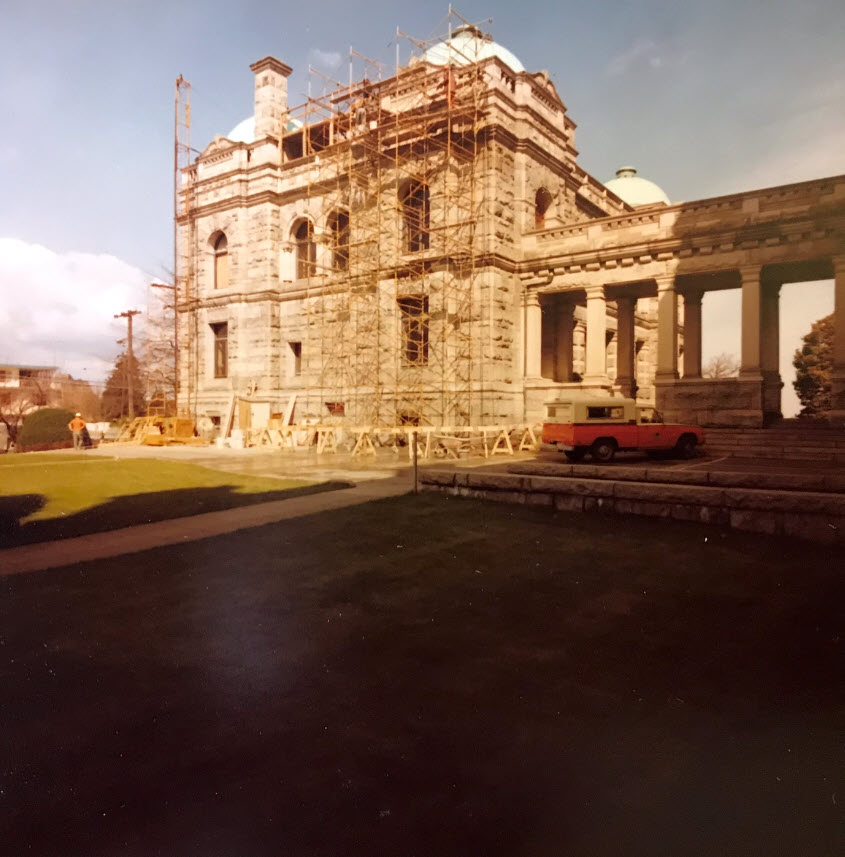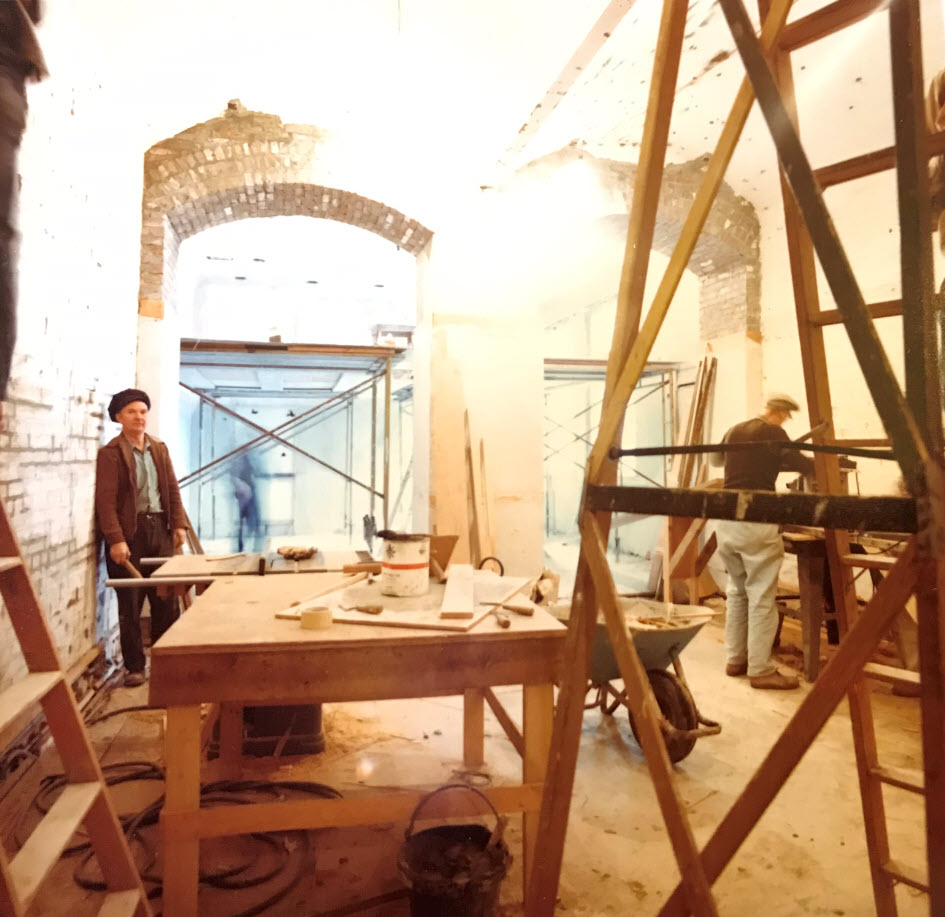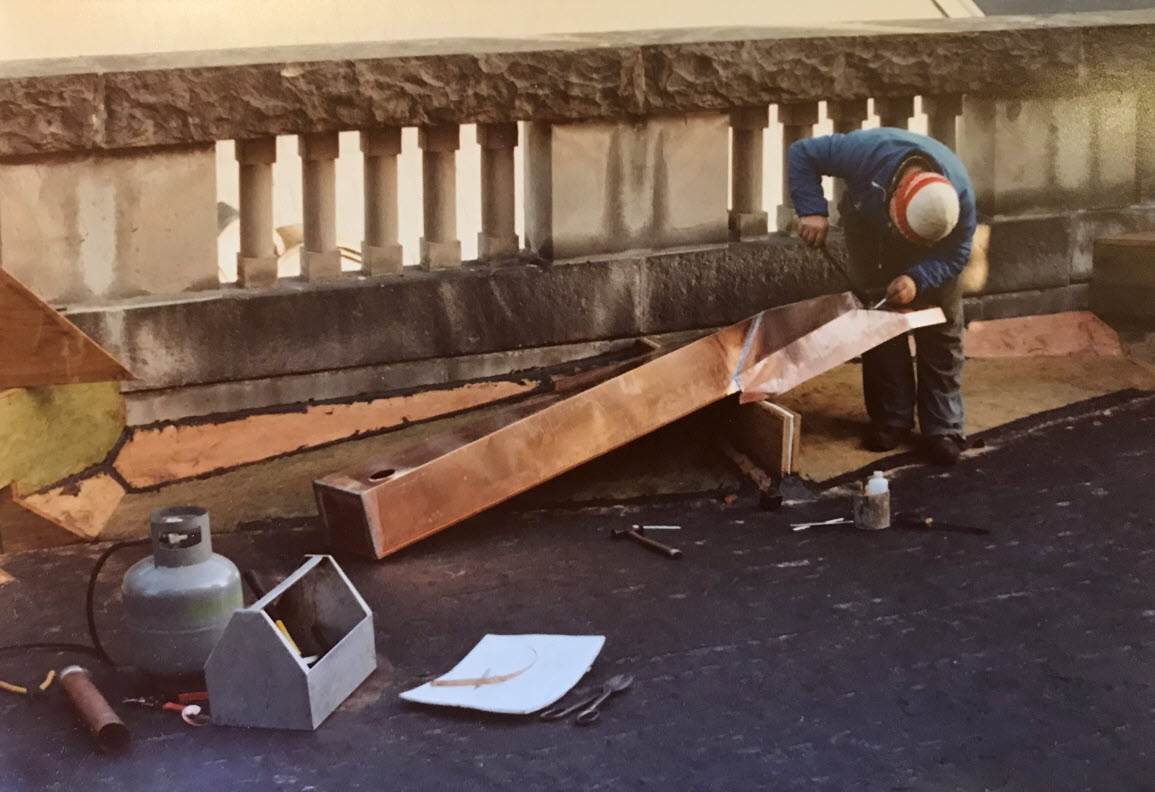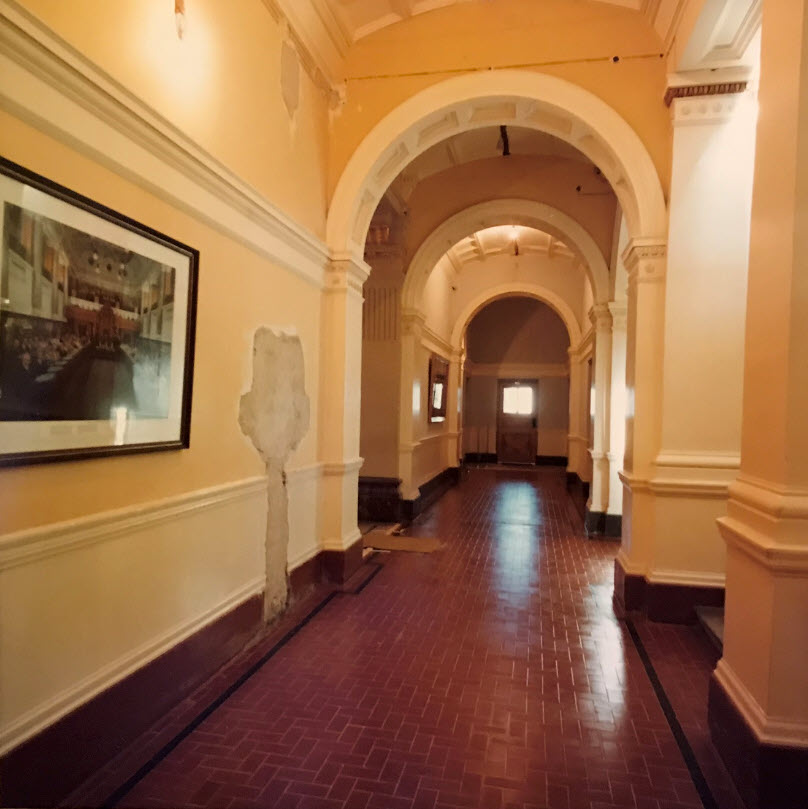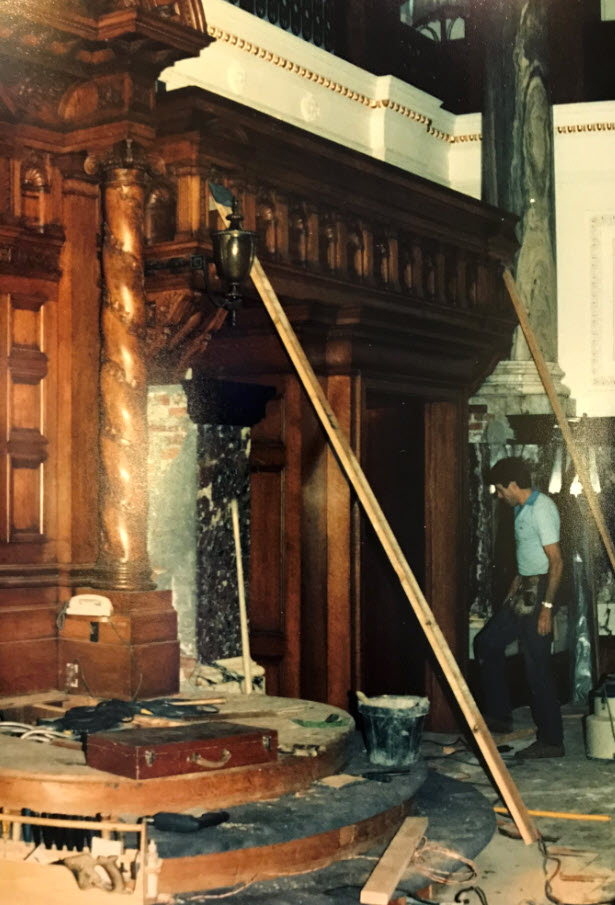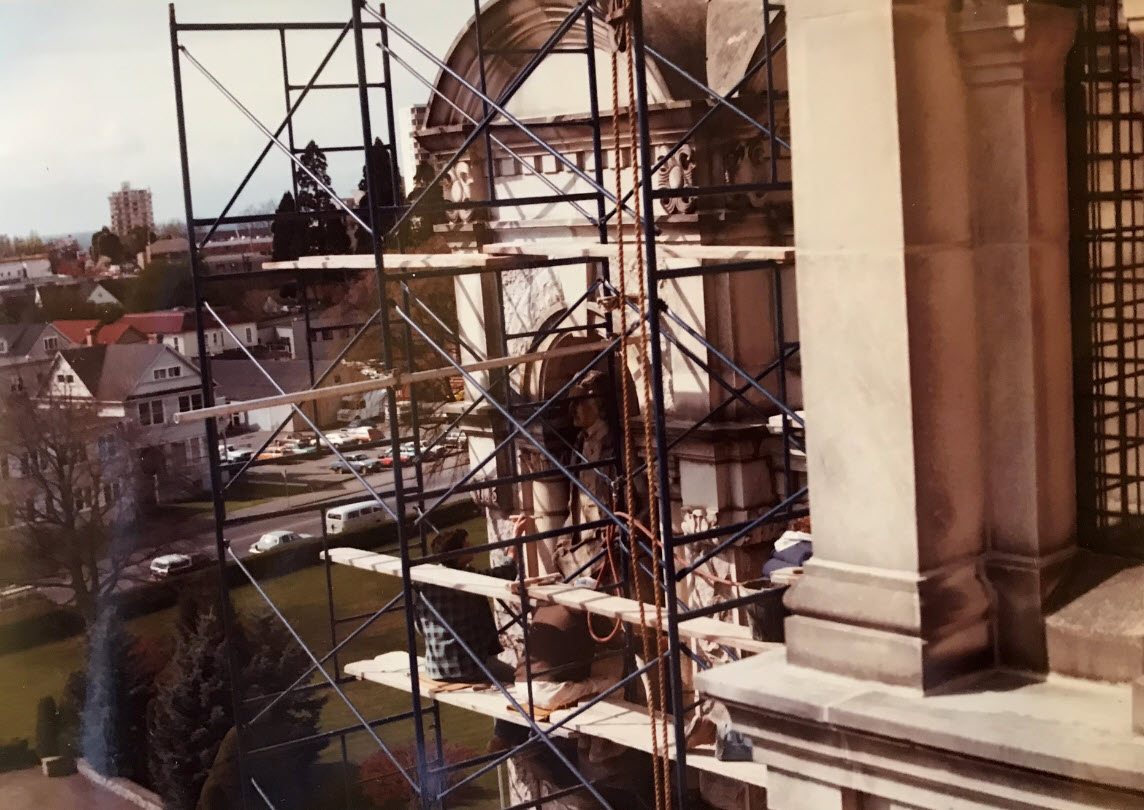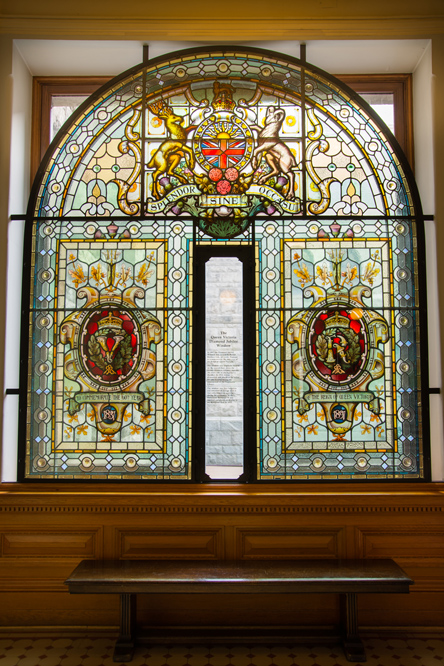After 70 years without regular improvements or renovations, the Parliament Buildings had deteriorated noticeably. With leaking roofs, rotting foundation timbers, and an antiquated electrical system, the Buildings were showing their age. Inside, years of insensitive alterations such as plywood partitions or modern light fixtures had gradually eroded or replaced much of the original design. Worn linoleum covered ceramic floor tiles. Numerous layers of paint dulled the fine detail of the ornamental plaster and hid the original interior colour scheme of white lead-based paint.
In 1973, the renovation and restoration of the Parliament Buildings was begun to make the best use of all space. In part, this was due to parliamentary reforms that greatly changed the working life of MLAs. Until this time, Private Members (MLAs who are not Cabinet ministers) had no permanent offices and were expected to vacate the building to make room for ministry staff between the relatively brief legislative sessions. The government extended the length of sessions, and the position of MLA became a full-time job. Members needed a year-round office in Victoria and in their home constituency. The renovation and restoration had to create adequate workspace for all Cabinet ministers, MLAs, and their support staff. All government employees not directly connected with the Legislative Assembly were relocated to other buildings. These changes required altering the use of many parts of the Parliament Buildings. However, these alterations were designed in keeping with the original architectural plans and done with historically appropriate materials.
The restoration and renovation project, supervised by architect Alan Hodgson, took over a decade. Every effort was made to use original or historically appropriate materials to return the Buildings to their former glory. For example, each of the hundreds of stained and leaded glass panels were removed, restored, and reinstalled. The Queen Victoria Diamond Jubilee Window, once thought destroyed, was recovered, repaired, and placed in the east side of the Hall of Honour.
At a time when the need to sensitively restore the historic Parliament Buildings was just beginning to gain wide acceptance in B.C., the commitment by two different governments to spend over $40 million to restore and renovate the Buildings is remarkable. For thousands of British Columbians and other visitors, the beauty of Francis Rattenbury's original vision can be seen throughout the revitalized buildings.
